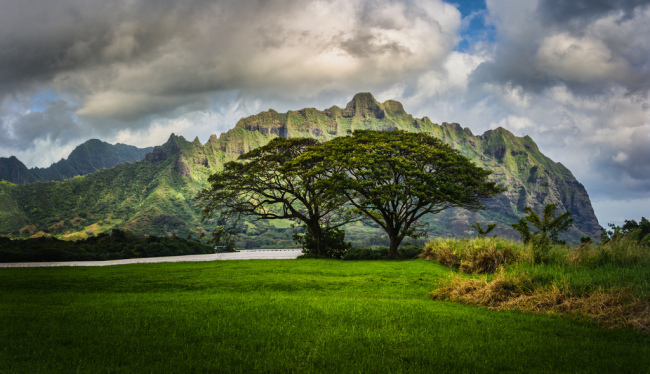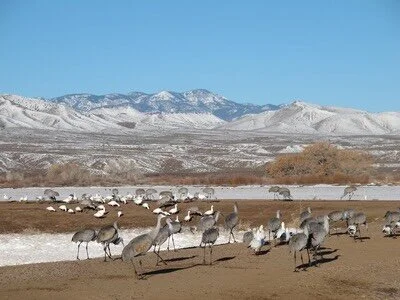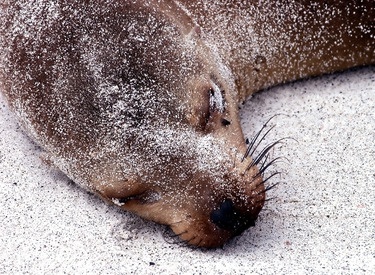by Atreyee Gupta
The first time my father took me to the island of Oahu, it was not to see the popular beaches. Instead we went straight to the interior of the Hawaiian isle where dense wilderness overtakes the landscape, creating a virescence that leaps out at the eye in full three-dimensional glory. It was a capital sight for me, an immediate opening up of my senses to the wonder of nature’s artwork. Ever since, immersing myself in Oahu’s jungle trails has been a necessity, an addiction I cannot deny.
 The Lost Cliffs of Oahu by Trey Ratcliff via Flickr CCL.
The Lost Cliffs of Oahu by Trey Ratcliff via Flickr CCL.
For my father, whose own parents had taken him as a child to the depths of the Wai’anae Mountains, Oahu’s wild heart was the key that unlocked his soul, bringing him back to himself. Our hikes exploring Waimea Valley or the Hau’ula trails were times, he explained, for us to look into our hearts and see the best of ourselves reflected in the natural world. “Know yourself,” was a phrase he often quoted to me on our jaunts.
Silently crossing burbling streams or making our way deeper into the Ko’olau Range, we kept our senses alert for the sounds of bark and nuts crunching beneath our feet, the quick flash of a red-crested cardinal as it dove into the branches, the whiff of delicate perfume from rose apple blossoms. Our speechless rambles were only broken with peremptory whispers as my father identified the cheerful yellow amakihi swaying on a limb, the fiery red stamens of a flowering myrtle as it quivered in the breeze, or the discovered tributary of a tiny silver runnel. My time with him was spent not on discussions about my future or his past, but on total absorption of Oahu’s natural paradise. Everything else, he claimed, was secondary.





